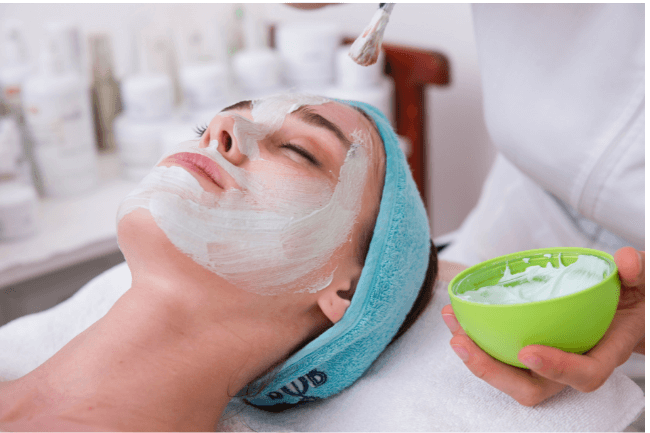13 Reasons Skin Brightening Ingredients are Sweeter than a Valentine. Skin “brightening” can mean many different things. Most commonly, brightening is used to mean blocking or lifting pigment to lighten, fade, or, in most extreme cases, bleach the skin. There are many skin brightening ingredients out there. They have gained huge popularity for their ability to treat dark spots and acne scars.
Skin brightening ingredients can also be found in products that help to increase cell turnover. Adding to the exfoliation process, one component of skin brightening is removing the damaged upper layers of the skin to reveal the healthy, new cells below. Here’s the rundown of what skin brightening can do:
- Helps with acne scars
- Helps with dark spots
- Helps with melasma
- Helps with liver spots
- Helps with hyperpigmentation
- Helps with post inflammatory marks from eczema and psoriasis
- Helps with sun damage/spots
- Reduces freckles
- Increases cell turnover
- Fine exfoliation
- Evens skin tone
- Adds lustrous appearance to skin
- Usually paired with antioxidants and moisturizers
- Feels like self care 🙂
Can your Valentine do all that?
Table of Contents
Why Skin Brightening?
As previously mentioned, one benefit of brightening can be the reduction and/or complete removal of dark spots from scarring, acne and sun exposure. You may be more prone to dark spots depending on your skin type. Pregnant women can also develop melasma, a skin darkening condition. If this applies to you, skin brightening treatments might be the move.
There are many skin brightening products on the market today as well as skin brightening ingredients that have been used for centuries. Traditional skin brighteners include: lemon juice, honey, yogurt and aloe vera to name a few. Over time we have added and combined ingredients like these to create “top of the line” skin brighteners. Many of these products include antioxidants and moisturisers in order to maximize the skin brightening benefits.
Drawbacks
While there are a myriad of benefits to skin brightening, there are a few drawbacks. These issues arise from the way skin brighteners work. To understand this, we need to understand how pigment works within our skin. When UV light touches your skin, cells called melanocytes get to work on a process called melanogenesis. These cells are at the base of the skin and create melanin which then travels to the surface resulting in a dark color appearing like a tan or a sub burn. In some cases the melanin clusters together creating uneven spots of pigment. This is the point where skin brighteners come in.
Chemical ingredients like hydroquinone were created to block key enzymes in melanogenesis and basically stop skin darkening altogether. As new cells grow, old dark spots will eventually shed resulting in a once again even appearance. However, hydroquinone and other chemical skin brighteners have been found to contain carcinogens which bring a plethora of negative effects.
Other natural skin brightening ingredients also work at a cellular level. Vitamin C, a common ingredient in skin lightening products, is an antioxidant known to lower melanin production. Glycolic acid, which is also found in many skin brightening products, works as an exfoliant and helps to brighten the skin by clearing away dead cells. People who have used skin lightening creams have reported dermatitis and skin irritation due to the thinning of the skin.
It is also very important to note that skin brightening products do not work as well on darker skin tones. If you have a darker skin tone, you must be careful so that you don’t end up over-correcting your dark spots and make them brighter than your base skin tone.
Dermatologists recommend applying a brightening product all over your face rather than only in certain problem areas. Also performing a patch test with any new product, especially a skin brightening product is a good idea. Using a small amount on a low risk area like the wrist is a good way to check for negative reactions.
Natural skin brightening ingredients
- Vitamin E: Vitamin E, like Vitamin C, is a powerful antioxidant. Vitamin E guards against UVB (the rays that cause sunburns), while Vitamin C guards against UV damage (aging). Together these two vitamins can fight as powerful sun protection. Vitamin E can also treat acne scars and stretch marks while simultaneously providing natural moisture. When combined with lemon juice and applied as a mask Vitamin E can also function as a more potent skin brightening treatment. Mix a 2:1 ratio of Vitamin E oil to lemon juice, apply to dry clean skin, let dry, and finally rinse with cold water. This process is recommended to be repeated twice a week.
- Licorice Extract: Licorice contains two active ingredients: glabridin and liquiritin. Glabridin is anti-inflammatory and promotes skin brightening by inhibiting the activity of tyrosinase, an enzyme involved in the melanogenesis process. Liquirtin aids in breaking up and removing pre-existing melanin. Licorice extract has been predominantly used to treat dark circles under the eyes but it can also help to even out your overall skin tone.
- Kojic Acid: Kojic acid is a byproduct of different fungi. It works by blocking the production of tyrosinase, limiting your melanin production. This skin brightening ingredient has gained popularity in the skincare market due to its natural origin.
- Papaya Extract: Papaya extract also appears in products as papain. Papaya contains hydroxy acids which brighten the skin by exfoliating away dead skin cells and promoting new cell growth. Papain can be found in many products today, it is used in cleansers, peels, masks, and scrubs. Dermatologists recommend that you use products containing this ingredient once or twice a week.
Final Thoughts
Skin brightening might not be for everyone, but the process of how it works has been understood and used to create products that can effectively brighten the skin. There are many chemical brighteners out there that are effective, however many of these come with a dark side. If you are going to try a skin brightening treatment, we recommend that you try the natural route. There are many natural ingredients that have been studied and found to perform as well as chemical brightening counterparts, without the negative side effects.




